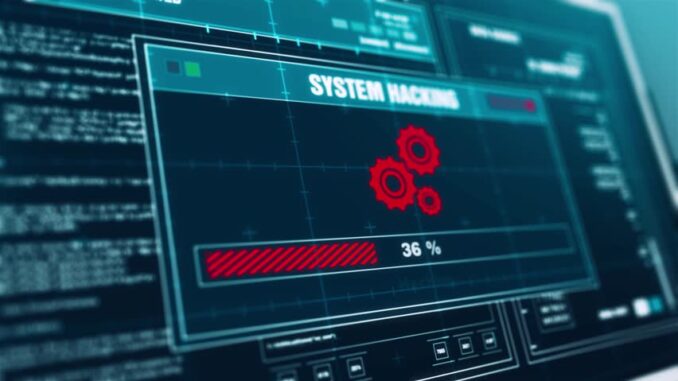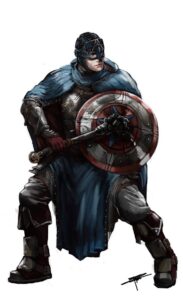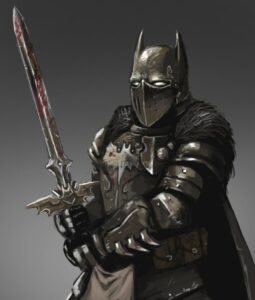
When I started to look at this concept of taking the Sentinel Comics Roleplaying Game to tell a fantasy story, the big thing that I was concerned about was getting a good fantasy feel for character generation. Character creation is made up of four distinct steps – choosing a Background (where you came from), a Power Source (how you came into your powers), an Archetype (how you use your powers), and then a Personality. Each section has 20 entries and they determine what powers and qualities you have access to put dice into as well as letting you select a number of different abilities which are the tools you have to break the standard rules. And because they are meant to tell superhero stories, all of these things are written with such a concept in mind. But as I started to drill down into them, I started to find that more and more of them could either be lifted whole cloth or given a fresh coat of paint (aka, renamed to something more genre specific).
Now, to avoid forcing my editors to look at another 1500+ words this week, I’m just going to break this up into a few different pieces. (Future Ben would like to apologize for the fact that this is still nearly 1300 words.) First things first – I wanted to look at powers and qualities and how they might be “hacked” to reflect a change in genre.

If you remember from past articles, a dice pool is made up of three different dice – one power, one quality, and then your status die. Powers and qualities are also assigned to certain abilities, making them unique to that hero over another hero that may choose the same ability. Powers and qualities are both gained through the first three steps of character creation – Background gives you some early options for qualities and then both Power Source and Archetype have a mix of different powers and qualities that you can assign dice to.
The qualities list is really the one that needs the least amount of work to make it usable in a fantasy setting. The only section that needs some work is the Information Qualities list – Deep Space Knowledge doesn’t make much sense in the genre and both Science and Technology only really work in certain settings. But the rest of the list – Criminal Underworld Info, History, Magical Lore, Medicine, and Otherworldly Lore are right at home. Maybe Otherworldly Lore gets changed to Extra-Planar Lore and Medicine to Chirurgery, but the rest of the list is just fine. Deep Space Lore can easily get replaced with something like Monster Lore. Meanwhile, Science and Technology can get replaced with things like Academics and Crafting or Tinkering. The other three quality categories of Mental, Physical, and Social can exist unchanged.
Powers, on the other hand, are split into 9 different categories – Athletic, Elemental/Energy, Hallmark, Intellectual, Materials, Self Control, Psychic, Mobility, and Technological. And again – there really isn’t a need to do a lot of work in replacing many of these powers – a lot of them can simply be used whole cloth or reskinned. There’s a few odd balls like the Cosmic and Nuclear powers, but a lot of them are things that would be right at home in a spell description or supernatural ability. Drop Nuclear entirely and change Cosmic to something like Arcane. The Signature Vehicle power from the Hallmark category just gets renamed to Signature Gear and can cover anything from a bonded mount to a familial suit of magical armor. There’s a few others that I’m kind of on the fence about, such as Part Detachment, but I could see a player coming up with some clever uses for this with regards to regenerative powers, so I’m keen to let it stay on the list, but I could see other GMs ruling it as not fitting their particular paradigm.
Nothing else really needs to get changed until you get to the last section. As you can see, there’s a genre problem with the Technological powers. This category covers things like Powered Suits, Gadgets, Inventions, and Robotics – things you don’t normally see in a high fantasy game. But the good news is that the only character creation option that one of these is intrinsically tied to is one that also doesn’t fit well into a fantasy genre – that one being the “Powered Suit” Power Source. There’s a few additional Power Sources and Archetypes that give access to these Technological powers, but I genuinely don’t see a problem in just cutting it altogether. If there’s anything that comes up in character creation such as some kind of ancient technological device from a lost civilization, it can likely fit neatly into the Hallmark category.

So, that was a lot of words to change relatively little, but I wanted you all to see my thought process behind this. The next section is likely going to be similar – as I also wanted to take a look at Backgrounds. These are purposely vague to encourage a lot of different directions that a character could be taken and thus, there likely aren’t a lot of them that need to change too much, but there’s a couple that don’t quite fit the theme – namely Medical and Interstellar. Doctors do exist in fantasy settings, but the fact that two of the qualities on the list are qualities that don’t exist in our new list, I feel like there’s different ways we could take this. And the Interstellar background doesn’t quite jive unless you’re playing in a D&D-esque setting with creatures like Mindflayers that are from different planets, but even then I think you could get more mileage out of the Otherworldly Background later on in the list. The Anachronistic background is kind of on the edge, but I could see some really fun ways this could be played in a fantasy setting with an extensive history. And the Created background doesn’t quite make sense until you stop and consider that this could be a magical creation such as a golem type of creature. So instead of Medical, let’s add in Acolyte since something like that is missing from the list. And finally, let’s add in something more mercantile – maybe Merchant or Guild Member.
So the list of Backgrounds becomes – Nobility, Blank Slate, Struggling, Adventurer, Unremarkable, Law Enforcement, Academic, Tragic, Performer, Military, Retired, Criminal, Acolyte, Anachronistic, Exile, Former Villain, Merchant, Dynasty, Otherworldly, and Created.
Now, I already hear you asking – but what if I want to play a dwarf or an elf or another kind of fantasy ancestry? Then do it.
I don’t mean to come off as flippant, but pretty much every single one of these Backgrounds could be used by any number of people. Powerful family lines connected by destiny aren’t a hallmark of just humans. Dwarves have strong mercantile backgrounds as well as military prowess. Elves could find themselves in city guard of the town they were raised or exiled from their homelands. And Bilbo Baggins was just an unremarkable hobbit until he was plucked from his life into one of the greatest adventure stories ever told. In a system like this who a character is is much less important in the actual gameplay than what they do with the power they have. Bonuses and penalties are created through the actual playing of the game so there’s no room for that to be added based on whether a character is human or not. And honestly? Why does it even matter? Heroes are meant to break archetypes and societal molds – putting stats on them only limits that.
Next time we’ll look at the Power Sources and Archetypes steps of character creation, something that’s bound to be a bit meatier in injecting a fantasy feeling into. Until then, gamers.
